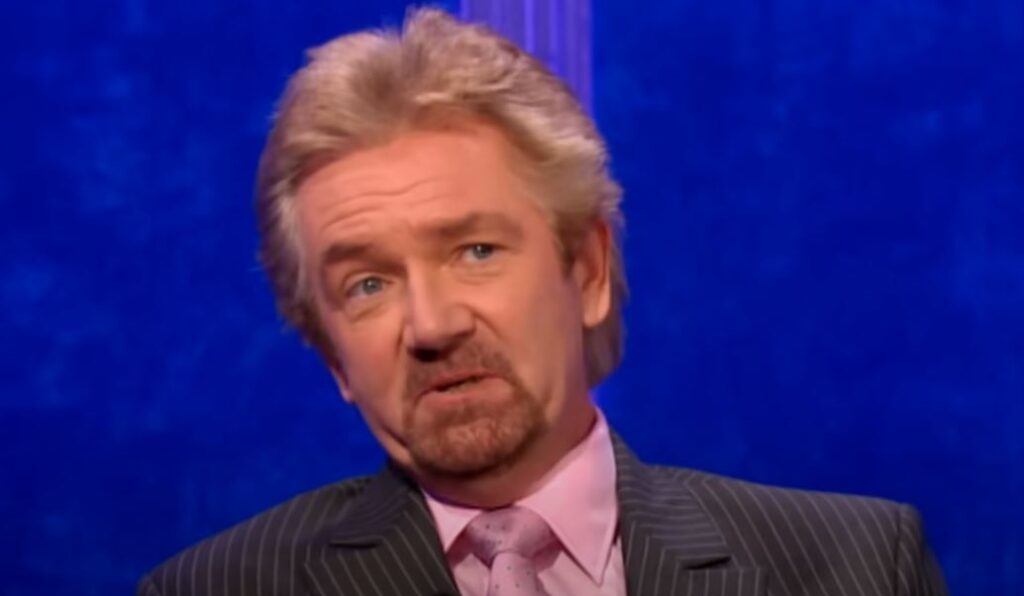
Noel Edmonds’ estimated $100 million net worth is the product of his career’s remarkable combination of enormous successes and intensely personal setbacks, as well as strategic reinvention and unwavering perseverance. Edmonds has consistently reshaped himself, which is remarkably similar to how aging tech platforms redesign their interfaces to remain relevant, whereas most television figures fade with changing formats.
Edmonds has established a reputation that endures across generations over the last fifty years. He gained notoriety on Radio 1 in the 1970s with a style that was remarkably unambiguous and instantly captivating. He made a smooth transition to television, and by the middle of the 1980s, shows like “Multi-Coloured Swap Shop” and “The Late, Late Breakfast Show” were commonplace in British homes, much like streaming services do now.
Noel Edmonds Net Worth – Updated Editorial Feature
Table: Key Facts About Noel Edmonds
| Name | Noel Ernest Edmonds |
|---|---|
| Date of Birth | 22 December 1948 |
| Age | 76 |
| Nationality | British |
| Occupations | TV Presenter, Radio DJ, Businessman |
| Major TV Shows | Multi-Coloured Swap Shop, Noel’s House Party, Deal or No Deal |
| Children | Lorna, Alice, Olivia, Charlotte |
| Marital Status | Married to Liz Davies (since 2009) |
| Past Spouses | Gillian Slater, Helen Soby |
| Residence | Ngātīmoti, New Zealand |
| Estimated Net Worth | $100 million (Source: celebritynetworth.com) |
| Notable Ventures | River Haven estate, Unique Group |
Next came the cultural phenomenon known as “Noel’s House Party,” which dominated Saturday nights for almost ten years. With Edmonds causing mayhem from the made-up village of Crinkley Bottom, the show drew over 15 million viewers at its height. Pop culture continues to make references to the now oddly iconic character Mr. Blobby, particularly in memes and nostalgic TV retrospectives. Like Sunday roast, tuning in was a ritual for many British families. At the time, Edmonds’ star was shining brightly—his income was skyrocketing, his image was everywhere, and his brand of wild fun was thought to be remarkably successful for primetime on the weekends.
However, a storm was building behind that success. His business group, Unique, failed in the early 2000s due to financial fraud that was planned by HBOS executives and later purchased by Lloyds Bank. It had a devastating emotional impact. Edmonds lost millions of dollars, his reputation suffered, and he later acknowledged that he considered suicide. It was a depressing chapter, far more so than fans could have ever dreamed. Edmonds, however, retaliated and did not disappear.
He revealed dishonest practices that had allegedly brought down many small businesses, not just his own, by pursuing a multi-year legal case. Lloyds paid him a settlement in 2019 that was estimated to be worth £5 million. He suffered a great deal in the fight, but it was a sort of moral triumph. To honor his fight, Edmonds even had a knight statue made in New Zealand by Weta Workshop, the same studio that created “Lord of the Rings.” The statue is more than just symbolic, standing tall on his estate. It is an individual monument, molded by survival and loss, that symbolizes not only his experience but also the suffering of all those harmed by financial malpractice.
Edmonds moved to New Zealand and changed his lifestyle in addition to purchasing real estate. At an estimated NZ$30 million, the River Haven estate has a café, a wellness center, a vineyard, and even a local shop. It’s a microcosm of his beliefs, not just a retreat. Both a business endeavor and a haven, the land is especially helpful to someone who used to endure the constant pressure of UK tabloids.
“Noel Edmonds’ Kiwi Adventure,” his comeback to television, shows a man who hasn’t lost his flair. Following his everyday life on the New Zealand estate while revisiting past traumas and current tranquility, the show treads a delicate line between eccentricity and inspiration. The idea is similar to the narrative approach of other introspective celebrity endeavors, such as Jeremy Clarkson’s farm series, which combine humor and surprising nuance. Edmonds is rebranding again through strategic content placement, this time as a man who got back up when the ground gave way, rather than just as a quirky TV veteran.
Another pivotal moment in my career was Deal or No Deal. His passionate, frequently ethereal delivery turned the straightforward boxing match into a psychological drama. Edmonds orchestrated every moment as viewers watched strangers navigate chance and instinct in more than 3,000 episodes. He was the highest-paid presenter on UK television at the height of his career, earning an astounding £3 million a year. In addition to greatly increasing his net worth, that kind of income put him in the same financial echelon as broadcasters like Chris Evans and Graham Norton.
Edmonds has ventured into contentious areas even off-screen. He famously advertised gadgets like the EMP Pad, making health claims that caused medical experts to take issue. He is a divisive figure because of his strong spiritual convictions, which include theories about cosmic energy and consciousness. However, Edmonds stays unfiltered in a media landscape full of carefully manicured personas and risk-averse brands—confusion to some, but refreshing authenticity to others.
There are many similarities between his story and those of public figures who have endured mockery only to rise to prominence again, such as Robbie Williams after Take That or even Oprah Winfrey after initial backlash. Edmonds, who is exceptionally defiant in spirit and incredibly versatile in media format, is a rare gem. Few famous people have the guts to stand so blatantly for their beliefs while still running multimillion-dollar businesses.
